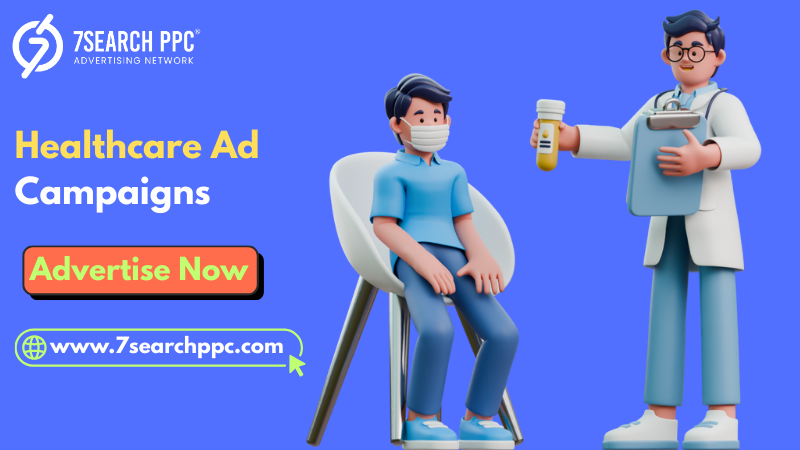
Why studying case studies matters
Healthcare ad campaigns are different from regular advertising. The audience is sensitive, decisions are personal, and trust is critical. A campaign that works in one context might fail in another if it is not planned carefully. By looking at campaigns that delivered real results, marketers can understand what resonates, how to measure success, and which strategies can be adapted to their own campaigns.
Even if a pharmacy or healthcare brand has a big budget, investing blindly can lead to wasted money. The lessons learned from case studies help avoid common mistakes and guide decisions with data-backed insights.
Common challenges healthcare advertisers face
Many campaigns fail not because of poor ideas but because of poor execution. Some common challenges include:
- Reaching the right audience: Ads that go to the wrong demographic rarely generate meaningful results.
- Balancing education and promotion: Healthcare ads need to inform, not just sell, otherwise engagement drops.
- Measuring results accurately: Without tracking the right metrics, it is hard to know if the campaign succeeded.
- Budget optimization: Spending without insights leads to overspending or underperforming campaigns.
By studying successful healthcare ad campaigns, marketers can see how these challenges were overcome in practice.
Healthcare advertising examples
Let’s explore some key examples that demonstrate what makes campaigns successful. These are not about brand names but the approach and results they achieved.
Awareness through patient stories
One healthcare campaign focused on sharing real patient experiences. By highlighting how treatment improved quality of life, the campaign built trust and empathy. Engagement was measured through video views, shares, and time spent on landing pages. The result was a significant increase in consultation bookings.
This approach shows that connecting emotionally while educating patients can drive results. For more insights, platforms specializing in Healthcare Advertising offer strategies on building campaigns that balance information and impact.
Targeted campaigns for chronic conditions
Another campaign targeted people with specific chronic conditions. Using data-driven targeting, the pharmacy advert reached individuals most likely to engage. The message was personalized and focused on the benefits of timely care. Conversion tracking showed that patients not only clicked the ads but also scheduled appointments, demonstrating a high return on investment.
This example highlights the importance of audience segmentation and personalization. The right message to the right person drives engagement and action.
Seasonal health campaigns
Some campaigns are designed around seasonal health challenges like flu season or allergy spikes. One healthcare ad campaign created content that educated the audience about prevention, early symptoms, and available treatment options. Engagement metrics like downloads of health guides and social media interactions increased sharply during the campaign period.
By analyzing these seasonal trends, marketers can create timely campaigns that feel relevant and actionable.
Best healthcare ad principles
The most effective healthcare advertising follows some key principles:
- Focus on patient needs first: Education and empathy should come before promotion.
- Keep the message clear: Avoid overwhelming the audience with too much information.
- Use visuals wisely: Infographics, videos, and real-life examples make complex topics easier to understand.
- Track metrics consistently: Engagement, conversions, and trust signals show how well a campaign is performing.
Measuring success in healthcare ad campaigns
Every campaign should have clear objectives. Some common metrics include:
- Reach and impressions for awareness campaigns
- Click-through rate and engagement for interest campaigns
- Conversion rate, cost per acquisition, and return on ad spend for action-focused campaigns
These metrics help marketers understand the impact of their ads and make informed decisions for future campaigns.
Applying insights to your own campaigns
If you are planning healthcare ad campaigns, start by setting clear goals. Decide whether your campaign aims to build awareness, educate patients, or drive specific actions. Then select the metrics that matter most.
Using platforms designed for healthcare advertising can simplify this process. These tools provide targeting, analytics, and reporting to help you run campaigns efficiently. You can Build Successful Healthcare Ad Campaigns using tools that measure every key metric and optimize performance.
Final thoughts
Case studies of successful healthcare ad campaigns offer invaluable lessons. They show that effective campaigns are not about big budgets or fancy designs alone. They are about connecting with the audience, educating them, and tracking results to make informed decisions.
The best healthcare advertising balances trust, education, and promotion. By studying these examples and applying data-driven insights, marketers can create campaigns that truly drive results.
For more strategies and insights, explore Healthcare Advertising to see how campaigns are structured to achieve measurable success.